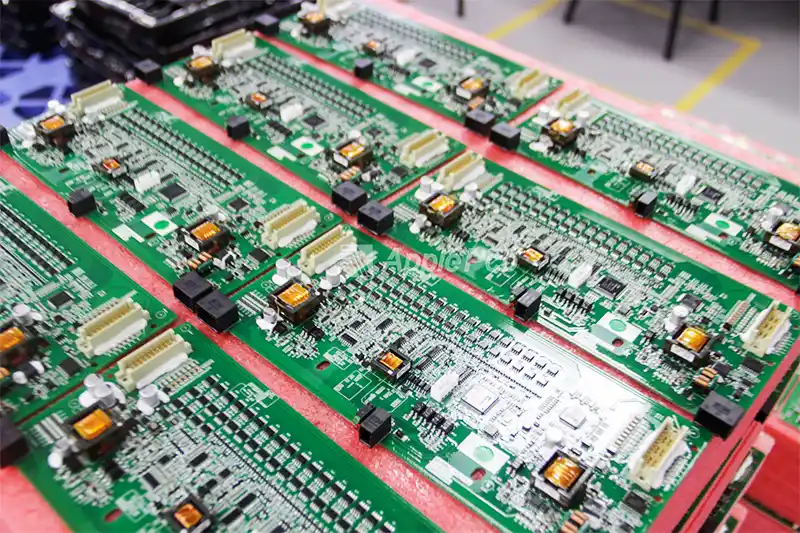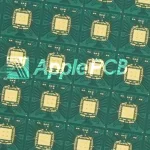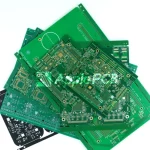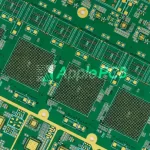
Conformal coating is a protective polymer film applied to the surface of printed circuit boards. It closely conforms to the shape of the board and its components, forming an impermeable barrier against contaminants and corrosion, thus protecting critical areas such as solder joints, electronic component leads and exposed circuit traces. Conformal coatings are typically applied in thicknesses between 25 and 250 microns and can significantly extend the life of a PCB. This article will explore the many types of conformal coatings available and is designed to help you choose the best conformal coating solution for your PCB based on your specific application needs.
Why Is Conformal Coating Used on PCBs?

1.Moisture-proof
Moisture is a common pitfall in electronic equipment and can easily lead to short circuits, corrosion and electrical failures. Conformal coating can form a uniform moisture barrier on the PCB surface, effectively preventing moisture and condensation from seeping in and ensuring the stable operation of equipment in humid environments, such as those found in tropical regions, the automotive industry and salt spray chambers. However, it should be noted that conformal coating does not provide IP-level water resistance. For devices designed to be submerged, encapsulation or nano-coating would be a better choice.
2.High Temperature Resistance
Extreme temperature changes can cause solder joints to crack and the PCB to delaminate. Some conformal coatings have good heat resistance, which alleviates the physical stress caused by temperature fluctuations and enables electronic devices to operate reliably over a wider temperature range.
3.Chemical Resistance
Automotive oil, industrial chemicals and cleaning agents can cause corrosion to electronic components. Conformal coatings are chemically resistant and can isolate sensitive components from corrosive substances, thereby reducing the risk of PCB damage.
4.Dust and Dirt Prevention
Dust, dirt and industrial debris can accumulate on circuit boards, forming conductive paths or insulating layers that affect circuit performance. Conformal coating seals the surface of the board, blocking the intrusion of contaminants -- ideal for use in dusty factories, on agricultural machinery and on outdoor equipment.
5.Mechanical Stress Resistance
Some PCBs are often exposed to vibration and physical shock. Conformal coating can disperse mechanical stress evenly, thereby reducing the risk of damage.
6.Lightweight
Conformal coatings are lightweight and place a minimal burden on components. Most coating formulations support simple, uniform coating for mass production.
7.Insulation
Conformal coating provides excellent insulation and prevents arcing. It also enables PCB conductor spacing to be reduced by over 80%, thereby improving circuit density and design flexibility.
Types of Conformal Coating
Conformal coatings can be categorised into two main types according to their performance requirements and different application scenarios: conventional protective and special. The conventional type is mainly used in general industrial and consumer electronics environments, providing basic moisture and corrosion protection. In contrast, the high-protection type is designed for use in more demanding conditions, such as high temperatures, high humidity and strong corrosion environments. It usually offers a higher level of protection for PCBs. The different types of conformal coating will be introduced in detail below to help you choose the most suitable material for your needs.
Conventional Protective Type
The three types of conventional protective conformal coating to be introduced below are all translucent. They are made up of a resin-based, one-component system which can be diluted with solvents or even water. While they offer some protection, they are not completely waterproof.
1.Acrylic Resin Conformal Coating (AR)
AR can be considered the 'entry model' of three-proof coatings. It offers good electrical insulation, moisture resistance and strong abrasion resistance. The biggest advantage of AR is that it is very easy to use and rework, and can be easily removed with common solvents and without special equipment. This makes acrylic coatings particularly useful for field repairs or for products that require frequent commissioning.
Although its solvent resistance is not as good as that of other types and its protective performance is reduced in strong corrosive environments, it is cost-effective and easy to construct, making it ideal for most industrial or consumer-level application scenarios.
2.Silicone Resinconformal coating (SR)
If your circuit boards operate in environments with high temperatures, high humidity or drastic temperature changes, then silicone conformal coating is definitely worth considering. Its most notable feature is its wide temperature resistance range; many models can operate stably above 200°C and some formulations can even withstand extreme temperatures of up to 600°C. This makes it ideal for use in automotive engine compartments, outdoor LED lighting and aviation equipment, as well as in other scenarios involving high heat stress.
In addition, silicone conformal coatings have superior moisture resistance, which improves with thicker coatings. Like AR, silicone conformal coatings are easy to apply and rework, curing in about an hour at room temperature.
3.Urethane (Polyurethane) Resin Conformal Coating (UR)
Polyurethane conformal coatings are the “tough guys” of the industry. They are renowned for their exceptional resistance to chemicals, moisture and abrasion, making them ideal for critical equipment that requires long-term operation in challenging environments, such as in the aerospace and military sectors, as well as in control systems for the oil and gas industry.
However, once cured, polyurethane conformal coatings are very stubborn and rework becomes difficult.Complete removal requires special solvents, long soak times and agitation using brushes or ultrasonic baths. This process is complex and costly, and there is a risk of PCB component damage. They also take longer to cure than acrylics and silicones, so they may be less suitable for high-volume, fast-delivery production lines. Nevertheless, polyurethane protection is a trusted choice for high-reliability scenarios where things cannot easily go wrong once it is in use.
Special Conformal Coating
In addition to the three common types of conformal coatings listed above, there are some special types of conformal coatings that may be suitable for your application.
1.Epoxy resin conformal coating (ER)
Epoxy resin triple-proof enamel is a high-strength, high-sealing-property conformal coating, usually supplied in two-component form. It cures to form an extremely hard, virtually impermeable protective layer. Compared to conventional conformal coatings, it has superior moisture resistance, extreme abrasion resistance and chemical stability, and is therefore often used in industrial and potting applications where high levels of protection are required. However, its strength also means it is less flexible than other materials. Once cured, rework is virtually impossible.
2.Parylene conformal coating
Parylene conformal coating is a high-end coating applied by vapour deposition that provides extremely uniform and ultra-thin coverage. This allows for the seamless encapsulation of even the most complex three-dimensional circuit structures. Parylene coatings have excellent dielectric strength, moisture resistance and solvent resistance. They are also able to withstand virtually any extreme environment, including high humidity, high temperatures and strong corrosion. However, this high performance comes with the disadvantages of difficult rework and high equipment costs.
3.Thin Film/Nano Coating
Thin film/nano coating is an extremely thin, lightweight surface protection solution that is applied to circuit boards by spraying or dipping them in a fluorocarbon-based solvent. Although it is called a 'nano-coating', it does not necessarily have a thickness of one nanometre. The main advantage is that it provides basic hydrophobicity, protecting the device from short-term moisture exposure and preventing water vapour from rapidly penetrating the circuitry. However, this type of coating does not offer the same level of protection against moisture, corrosion or mechanical impact as traditional conformal coatings, so it is not suitable for use in extreme environments over extended periods.
How Should Conformal Coating Be Applied?

Once you have selected the right type of coating, the next critical step is to apply it correctly to the board. The choice of application method affects not only the level of protection, but also production efficiency, cost control and product consistency. The following are a few common methods of applying conformal coatings:
1.Manual Spraying
This basic method is usually operated with the aid of an aerosol can or a hand-held spray gun. This method is suitable for small-batch production or the prototype stage. It does not require complex equipment and offers greater flexibility. However, masking is often required to avoid coating unnecessary areas. Additionally, the spraying effect can be affected by the operator's proficiency, resulting in inconsistent outcomes from batch to batch.
2.Automatic Spraying
Automatic spraying systems are a more efficient solution and are usually combined with conveyor line operation. In this case, the path of the spraying head is programmed to ensure a uniform and consistent coating. This approach is suitable for medium-sized applications requiring a certain production pace, and can effectively reduce human error and improve quality consistency.
3.Selective Coating
An upgraded version of automatic spraying, selective coating applies conformal coating to specific areas of the circuit board through programmed, precision spray nozzles. This eliminates the need for extensive masking and saves time and material. This saves time and material. Some systems also incorporate UV curing, which can be completed immediately after coating. This makes them ideal for industrial production lines with high-volume, high-consistency requirements.
4.Dip Coating
This method involves immersing the entire board in a conformal coating solution. The uniformity of the coating is controlled by factors such as immersion time, lifting speed, and the viscosity of the coating. It is generally used for large quantities of products that require protection on both sides.
5.Brushing
Brushing is a basic manual coating method mainly used for component repair or replacement or in small-scale production scenarios. The operator applies the conformal coating directly to the area to be protected using a brush. This method requires no investment in equipment, is inexpensive and easy to operate, but relies heavily on manual experience and produces relatively uneven and inconsistent coatings.
How Should I Select the Application Method for Conformal Coating?
The choice of method depends on various factors, such as volume requirements, budget for equipment, complexity of PCB design, and the need for rework and maintenance. For instance, if only a small number of PCBs are coated occasionally, it may not be necessary to invest in fully automated equipment. However, for highly reliable, mass-produced products, automated or selective coating would be more advantageous.
Final Thoughts
We hope this article helps you to understand the types and application methods of conformal coating more clearly, and provides you with some references for selecting PCBs. If you have any further questions regarding triple-proof coating for your project, please do not hesitate to contact us. ApplePCB is a PCB manufacturer with 15 years of experience. We provide a one-stop service, from component procurement and PCB manufacturing to assembly and testing.



